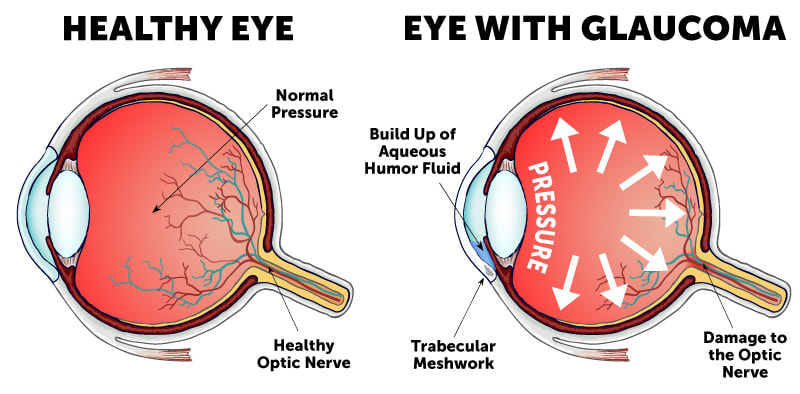Quality Retina Service Near Me: Specialized Look After Retinal Conditions
Quality Retina Service Near Me: Specialized Look After Retinal Conditions
Blog Article
Recognizing the Various Vision Modification Procedures Available for Clearer View
In the realm of vision modification procedures, a multitude of alternatives exist to attend to refractive errors and provide individuals with clearer view. From the commonly recognized LASIK surgical treatment to much less invasive treatments like PRK and implantable lenses, the field of ophthalmology supplies an array of methods tailored to fit various demands and preferences. Each treatment comes with its own set of considerations, advantages, and prospective risks. Comprehending the subtleties of these vision correction methods is critical for making notified choices concerning one's aesthetic health. Let's check out the ins and outs of these procedures and lost light on the course to attaining boosted vision clearness.
LASIK Surgical Treatment
LASIK surgical procedure is a typical refractive procedure made use of to correct vision problems such as nearsightedness, astigmatism, and farsightedness - glaucoma service near me. This medical method, which means Laser-Assisted in Situ Keratomileusis, intends to reshape the cornea to improve just how light is concentrated on the retina, ultimately boosting vision clearness. Throughout the treatment, a thin flap is developed on the cornea, and a laser is utilized to remove specific amounts of cells to reshape it properly. This reshaping permits for light to be precisely concentrated onto the retina, remedying refractive errors.
One of the main benefits of LASIK surgical procedure is the quick improvement in vision experienced by clients. Generally, LASIK surgical procedure is a preferred selection for individuals seeking a long-lasting remedy for their vision troubles.
PRK Treatment
While also an usual refractive treatment, the PRK (Photorefractive Keratectomy) technique differs from LASIK surgery in its approach to correcting vision troubles. In PRK, instead of developing a flap on the cornea, the external layer of the cornea, called the epithelium, is totally removed. This enables the laser to improve the cornea to fix refractive mistakes such as nearsightedness, astigmatism, and farsightedness directly on the surface.

Despite the longer recovery time, PRK can produce superb cause vision renovation, making it a valuable alternative for those who may not be appropriate candidates for LASIK surgical procedure.
Implantable Lenses
As opposed to PRK where the cornea is reshaped straight, implantable lenses offer another technique for fixing vision by placing man-made lenses inside the eye. This treatment is especially valuable for people with high levels of farsightedness, astigmatism, or nearsightedness that may not appropriate candidates for laser surgical treatments like LASIK or PRK.
Implantable lenses, likewise called phakic intraocular lenses, work by supplementing the eye's natural lens with a Discover More Here fabricated one. glaucoma service near me. These lenses can be placed before the all-natural lens (anterior chamber) or behind the iris and in front of the all-natural lens (posterior chamber) By readjusting the power and positioning of these lenses, eye doctors can efficiently remedy refractive errors and enhance visual skill
One benefit of implantable lenses is that they are removable and exchangeable, providing adaptability for future modifications. As with any type of surgical procedure, there are risks included, such as infection or cataract development. Patients considering implantable lenses should speak with an eye treatment expert to determine one of the most suitable alternative based on their specific requirements and eye health and wellness.
Corneal Rings
Corneal rings, also called intracorneal ring segments, are tiny, transparent tools inserted right into the cornea to correct vision distortions such as keratoconus. Keratoconus is a problem where the cornea thins and bulges outward, triggering vision to become distorted. The insertion of corneal rings helps to squash the cornea, improving visual acuity and minimizing the irregular astigmatism created by keratoconus.
The procedure for putting corneal rings is fairly fast and minimally invasive, commonly executed as description an outpatient procedure. Throughout the surgery, the eye doctor makes a small cut in the cornea and inserts the rings at a particular deepness. As soon as in position, the rings assist to improve the cornea, offering a smoother surface area for light to enter the eye, which can lead to more clear vision.
Corneal rings are taken into consideration a reversible procedure, as they can be gotten rid of or changed if essential. glaucoma service near me. While they might not completely eliminate the demand for glasses or contact lenses, corneal rings can dramatically enhance vision quality and overall visual convenience for individuals with keratoconus or other corneal irregularities
Refractive Lens Exchange
Adhering to the adjustment of corneal irregularities with treatments like corneal rings, another vision correction method that can resolve refractive mistakes is Refractive Lens Exchange (RLE) RLE is a surgery that involves replacing the eye's all-natural lens with an artificial intraocular lens (IOL) to correct refractive mistakes such as nearsightedness, farsightedness, and presbyopia. This treatment is especially useful for individuals who might not appropriate prospects for procedures like LASIK or PRK due to factors such as slim corneas or high refractive mistakes.

Conclusion
In conclusion, there are various vision adjustment procedures offered to assist individuals accomplish clearer sight. LASIK surgical treatment, PRK procedure, implantable lenses, corneal rings, and refractive lens exchange are all choices that can deal with different vision issues.
In the realm of vision adjustment procedures, a wide range of options exist to address refractive errors and provide people with more clear sight.LASIK surgery is a common refractive procedure used to correct vision troubles such as farsightedness, nearsightedness, and astigmatism.While also a common refractive treatment, the PRK (Photorefractive Keratectomy) method varies from LASIK surgical procedure in its technique to remedying vision problems.Following the improvement of corneal abnormalities with procedures like corneal rings, another vision correction strategy that can address refractive mistakes is Refractive Lens Exchange (RLE) LASIK surgical treatment, PRK procedure, implantable lenses, corneal rings, and refractive lens exchange are all choices that can deal with various vision problems.
Report this page